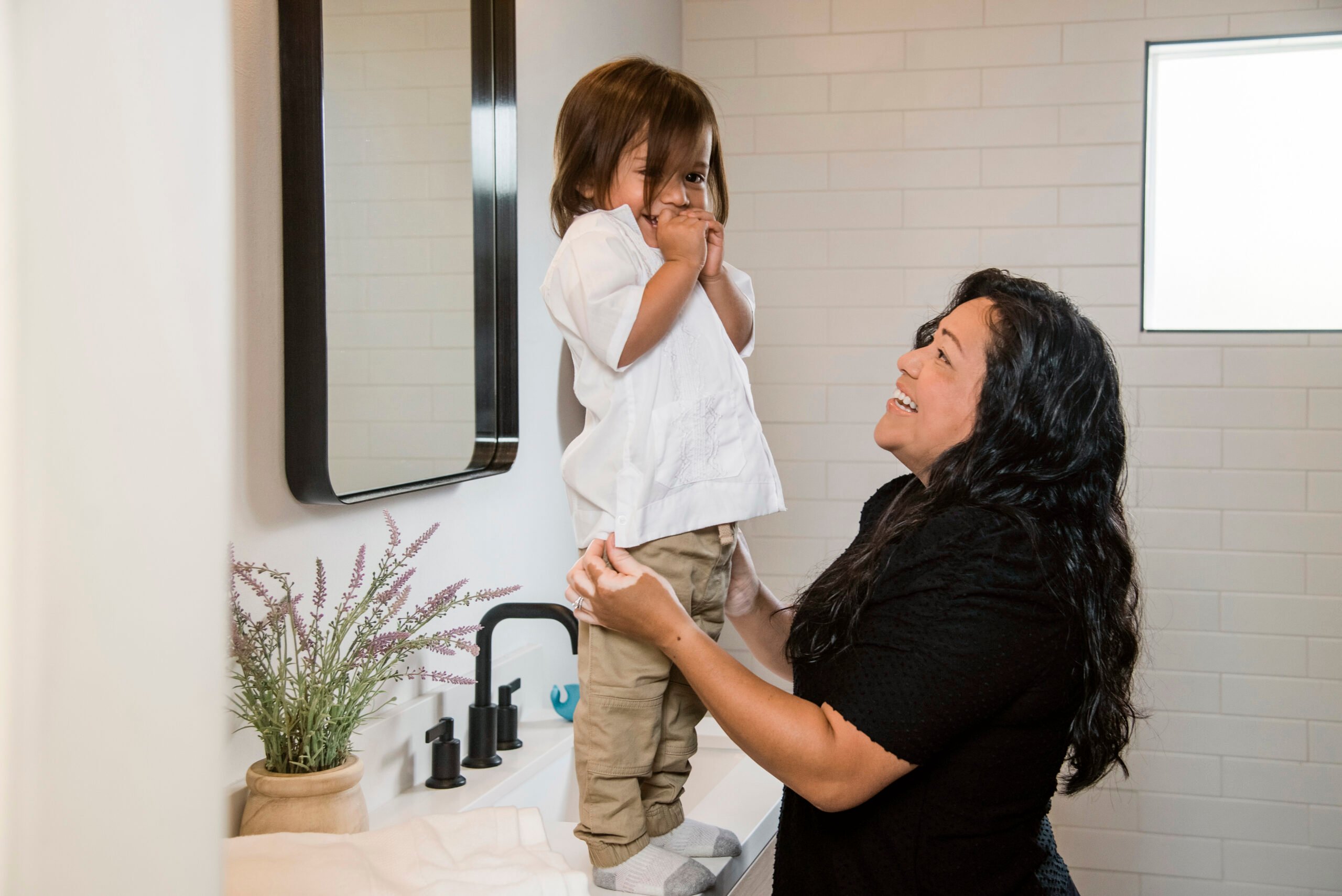

Handling Toddler Fears and Tears
Handling Toddler Fears and Tears
How to Gently Empower a Nervous Toddler to Try New Things
Let’s just get this out of the way: Toddlers have some (seemingly) weird fears.
Some of them make total sense: noisy places, big crowds, the dark. But when your kiddo digs in their heels, refuses to move, and becomes a Stage-5 clinger over something like … the green crayon on the table, it can be a littttttle bit baffling.
Or what about when your toddler goes from looooooving the heck out of something, to suddenly—for no apparent reason—trembling in fear at the mere mention of its name? Until today, they’ve loved going to the zoo, but now you’re rolling up to the entrance with a toddler who is screaming “NOOOOOOOOO ZOOOOOOOOOO!”
Are we in the Twilight Zone? If so, at least we’re all there together. #solidarity
So what do we do when our kids are feeling nervous or scared, whether it’s something that is “valid” and makes sense to us or whether it’s something seemingly ridiculous? Well, we have two options:
- Force them to do it scared, and toss them into the proverbial deep end.
- Create a safe space for them to process their feelings and empower them to try when they’re ready.
If you’ve been part of this BLF family for a hot second, you know which option reduces the fear-related meltdowns and creates less frustration for everyone, right? Spoiler alert: It’s option #2, and here’s how it works.
See Them and Okay Their Feelings
Okaying the feelings is a cornerstone of our philosophy and a key step in every one of the scripts we include in our online course, Winning the Toddler Stage.
Okaying the feelings communicates empathy and gives our children words they don’t yet have. Part of managing our feelings lies in the ability to name them. If you don’t have a name for what feels like butterflies in your tummy, that bodily sensation can feel even more scary and overwhelming.
By saying to your toddler, “I see you aren’t sure about the slide. You’re feeling nervous about it. It’s okay to feel nervous,” you’re communicating three important things:
- You love them and understand what they’re going through.
- All feelings are normal and okay.
- This feeling has a name they can use the next time they feel it.
Offer Assurance
Our default reaction when our kiddo suddenly gets suuuuuper shy and nervous is to push them toward the very thing they’re resisting.
“This will be fuuuuuuuuuuuuuuuun.”
“Don’t you want to go over and play with your friends?”
“But you loooooooove the park!!!”
And even though we don’t mean to, our pushing makes them feel overwhelmed and unsafe, which can lead to more clinging, more resisting, and more melting down.
And honestly, it makes sense. If you’re afraid of heights, does getting pushed out on the ledge make you go, “Oh man, you’re so right! Being on the edge of this tall building really is fun”? Of course not. If going in the water at the beach fills your head with visions of sharks and jellyfish, does it help when your spouse says, “It’s just water, I don’t know why you’re so scared”? Um, that’s a no for me dawg. (And also, thoughts and prayers for your spouse.)
The same is true for your toddler. The more you push, the less safe they feel. The less safe they feel, the less likely they are to branch out and explore new situations. At that point, their brain is in survival mode. So instead of pushing them, we want to make them feel safe by assuring them.
When you say, “I’m here for you and you can stay with me until you are ready,” you’re letting them know they can count on you. As their home base and safe place, your assurance is what will help them build the courage to try new things.
Tell the Story
Telling the story is the final step in helping your child work through their nervous feelings. All you do is narrate what is happening around you. It may seem simple, but this is a POWERFUL tool that works for both kids and adults:
“Oh, I see Phillip going down the slide. He is smiling so big!”
“There are Sara and Kira playing on the swings. Look at Kira’s bright yellow shoes.”
“The wind is blowing the leaves in the trees. They look like they are dancing.”
The simple process of telling the story helps to ground them in the present moment and further defuse the fear in your toddler’s brain, reducing their stress and panic.
But listen up: Make sure to avoid inserting your opinion into your narration. When you say things like, “See how much fun Phillip is having? I think you would have fun too,” it can sound like pushing, which, again, makes our kiddos feel unsafe.
You don’t have to convince your toddler of anything other than your reliable presence as they process their big feelings. So stick to the facts, go slow, and keep it low-pressure.
Transition your Toddler from Concerned to Confident
The toddler life is full of new experiences. Being left with a babysitter, moving to a new house, transitioning to a new bed… all of these scenarios can take your little one to stress-level midnight! Our online course, Winning the Toddler Stage, teaches you how to PREP toddlers ages 1-6 for a variety of new experiences, and reduce anxiety-induced meltdowns.
Parenting a kiddo who just seems prone to the nerves? We have a lottttt of specific strategies you can use to help them feel safe all day, err day – and you can start using them right now.
View The Course